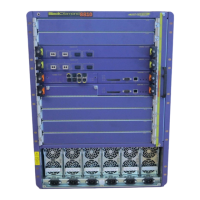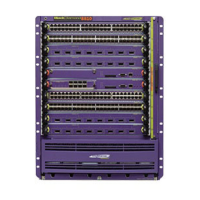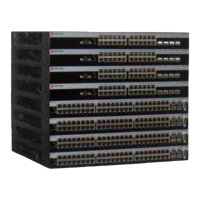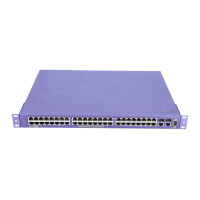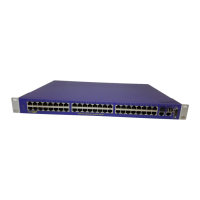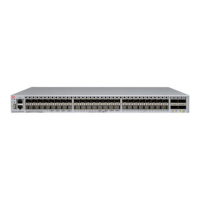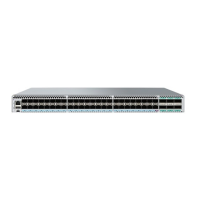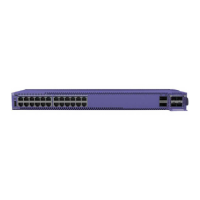Site Preparation
Extreme Networks Consolidated ExtremeXOS Hardware Installation Guide
38
UPS Features
A UPS traditionally can perform the following functions:
● Absorb relatively small power surges.
● Smooth out noisy power sources.
● Continue to provide power to equipment during line sags.
● Provide power for some time after a blackout has occurred.
In addition, some UPS or UPS plus software combinations provide the following functions:
● Automatically shut down equipment during long power outages.
● Monitor and log power supply status.
● Display the voltage (current draw) of the equipment.
● Restart equipment after a long power outage.
● Display the voltage currently on the line.
● Provide alarms on certain error conditions.
● Provide short circuit protection.
Selecting a UPS
To determine UPS requirements for your switch, ask these questions:
● What are the amperage requirements?
● What is the longest potential time period that the UPS would be required to supply backup power?
● Where will the UPS be installed?
● What is the maximum transition time that your installation will allow?
Extreme Networks recommends that you use a UPS that provides online protection.
Calculating Amperage Requirements
To determine the size of UPS that you need:
1 Locate the voltage and amperage requirements for each piece of equipment. These numbers are
usually located on a sticker on the back or bottom of your equipment. Then multiply the numbers
together to get Volt-Amps (VA):
VA = Volts x Amperes
2 Add the VA from each piece of equipment together to find the total VA requirement.
To determine the minimum amperage requirements for your UPS, we recommend that you add 30%
to the total.
UPS Transition Time
Transition time is the time that is necessary for the UPS to transfer from utility power to full-load
battery power. For Extreme Networks products, a transition time of less than 20 milliseconds is required
for optimum performance.

